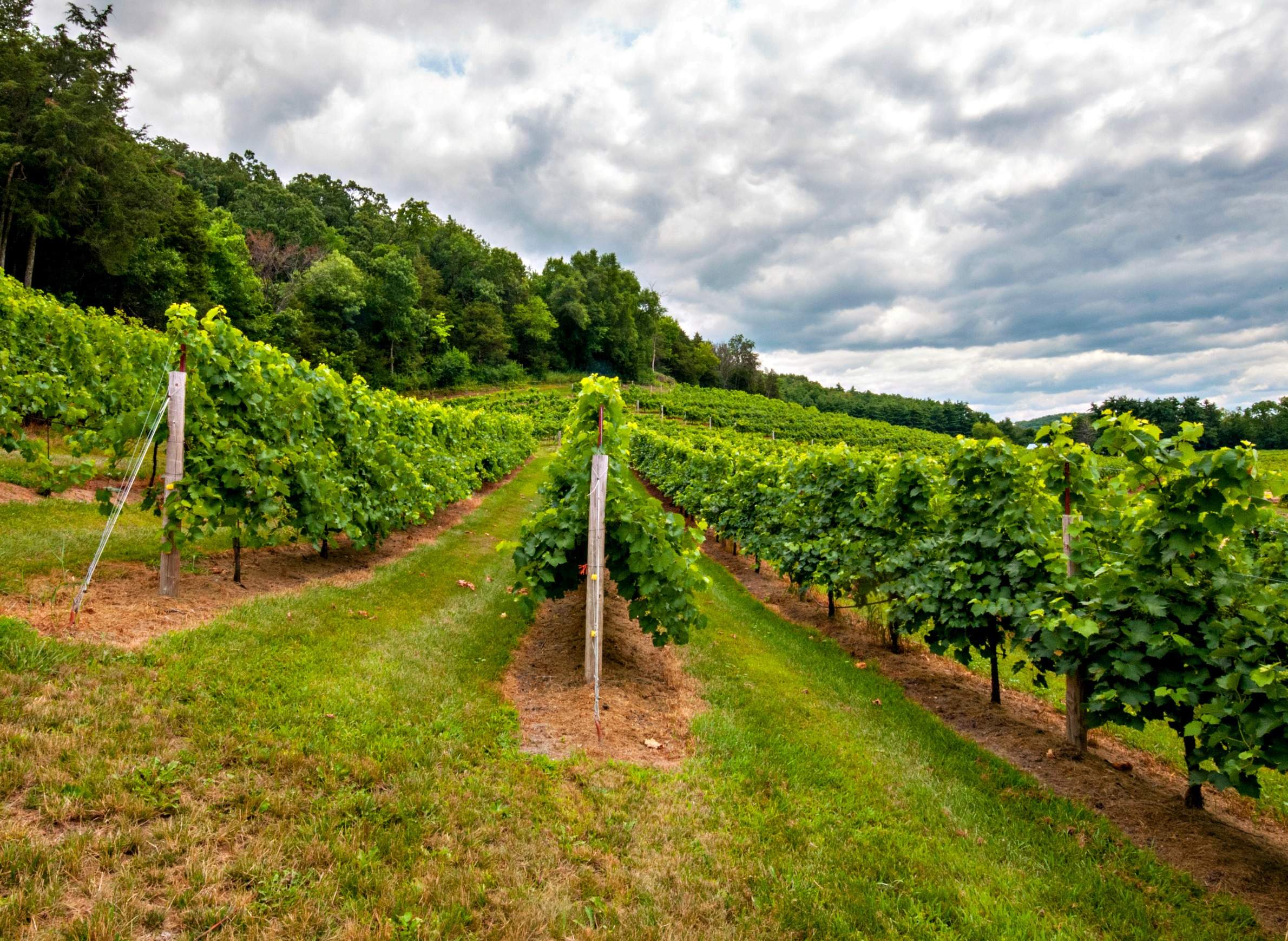
Wollersheim Winery, located along the Wisconsin River across from Prairie du Sac, is located on the site of the state's first vineyards.

Wollersheim Winery, located along the Wisconsin River across from Prairie du Sac, is located on the site of the state's first vineyards.
Wisconsin's wine industry is modest in scale, but has roots as old as the state itself. A Hungarian immigrant named Agoston Haraszthy planted the state's first vineyard in 1846 on the east bank of the Wisconsin River and founded the community that would become Sauk City. He headed west three years later, establishing the famous Buena Vista Vineyard in Seminole, California, and became known as the father of Californian winemaking. In Wisconsin, Haraszthy's vineyard lands would later become the site of Wollersheim Winery.
The wines produced in Wisconsin's unlikely climate are the result of centuries of selection, cultivation and hybridization of many grape varieties, said Amaya Atucha, a fruit crop specialist with the University of Wisconsin-Extension and assistant professor of horticulture at UW-Madison. With only 80 to 180 frost-free days across different parts of the state in an average year, Wisconsin's cold climate and soil pH is not particularly hospitable to many wine grapes. Atucha discussed the history and difficulties of viticulture in the state in a July 8, 2015 talk for the Wednesday Nite @ the Lab lecture series on the UW-Madison campus, recorded for Wisconsin Public Television's University Place.
"It's very challenging to grow grapes here," Atucha said. "And this has been a lot of science and a lot of discoveries and accidents that have taken us through this journey to be able to have Wisconsin wine."
Variants of a grape species first cultivated in western Asia thousands of years ago, Vitis vinifera, are grown to produce 99 percent of the world's wine today. While male and female flowers grow separately on wild grapes, Vitis vinifera was bred to have what are called perfect flowers, which have reproductive structures for both sexes. This morphology greatly increases fruit yield, supplying enough juice to produce wine.
Many grape species are native to the Americas, including Vitis riparia, Vitis berlandieri and Vitis labrusca. Wine production did not begin in the Western Hemisphere until the 1500s, though, when Spanish conquistadors and missionaries planted vineyards in hospitable regions using cuttings of Vitis vinifera. The lower fruit yields of North American grape species proved unfavorable for wine production, and the flavors of their wines discouraged cultivation for that purpose.
"For me, coming from Chile, never having these grapes… [i]t just tasted very chemical, like this foxy taste," Atucha said of her first experience with juice made from Concord grapes, which is cultivated from Vitis labrusca, and left her believing the taste was artificial.
"Afterwards, they took me to a vineyard where there was Concord grapes and they gave me some of the grapes to taste, and I was like 'wow, it tastes just like the juice,'" she said.
Much of North America is inhospitable to Vitis vinifera, leading to failed attempts at establishing vineyards in the British colonies along the Atlantic Seaboard during the 1600s and 1700s. European grapes faltered in the climate, and they were also more susceptible to insects and disease American grape species had evolved to resist.
It was not until the 1740 discovery of the Alexander grape in Philadelphia that North American wine production became feasible. A natural hybrid, this variety combined the hermaphroditic flowering traits of Vitis vinifera with the hardiness of a native species. The new, viable variety sparked an interest in hybridization, resulting in grapes capable of flourishing and producing wine in Wisconsin a century later.
"So the solution to the problem was actually not to try to make the vinifera grow, but to find a grape that would survive, that would yield enough, and that would make wine decent enough that they could sell and that people could drink," Atucha said.
Key Facts
Key Quotes